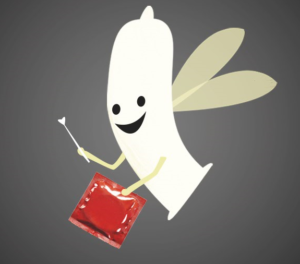
The Yukon is one of Canada’s three territories. Located north of British Columbia and southeast of Alaska, it’s a large expanse of land but one that’s quite sparsely populated — 29,000 of its 37,000 inhabitants live in the capital city of Whitehorse and the rest are scattered in smaller communities across 483,450 square kilometres.
The Yukon’s main sexual health and harm reduction organization, Blood Ties Four Directions Centre has a challenging geographical context to contend with, particularly when it comes to reaching individuals outside of Whitehorse. Social media therefore offer an interesting way to reach out to this dispersed audience.
In 2016, Blood Ties was preparing to carry out an HIV prevention and education campaign among 13 to 18-year-olds across the Yukon. While the organization knew that they wanted to do a multi-media campaign that would include condom distribution, print posters and a social media component, they hadn’t used social media very actively for their awareness campaigns in the past, and they weren’t sure exactly where to begin.
Here’s how Blood Ties Four Directions Centre went about creating their Facebook campaign, and some of the lessons they learned along the way:
To get direction on which social media would allow them to reach 13 to 18-year-olds in the Yukon, Blood Ties decided to seek advice from the experts: 13 to 18-year-olds in the Yukon. They organized four focus groups, two held in Whitehorse and two held in Haines Junction, a small community that lies within the traditional territory of the Champagne and Aishihik First Nations.
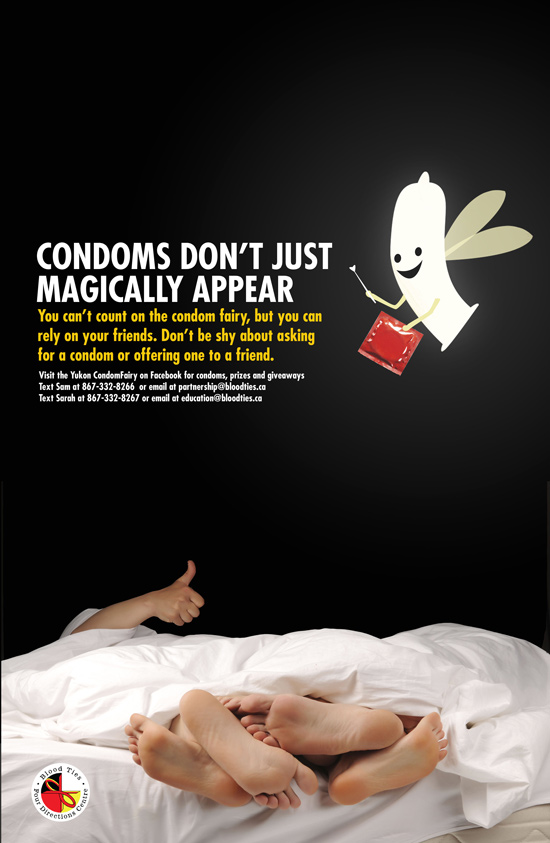 While they had initially considered developing a campaign that would combine various social media platforms including Facebook, Twitter and Instagram, the focus group participants indicated that with a few exceptions, most of them only used Facebook. Rather than having to develop materials for combined platforms, Blood Ties decided to focus its energies on Facebook.
While they had initially considered developing a campaign that would combine various social media platforms including Facebook, Twitter and Instagram, the focus group participants indicated that with a few exceptions, most of them only used Facebook. Rather than having to develop materials for combined platforms, Blood Ties decided to focus its energies on Facebook.
In addition to feedback on the medium, the focus group participants also provided lots of ideas for the development of the campaign message. In the process of speaking to their experts, the organization discovered that while young people were certainly open to using condoms when these were readily available, they didn’t always feel comfortable asking for condoms, let alone talking about them with their friends. One participant mentioned that it would be great if there were such a thing as a condom fairy that would manifest in the heat of the moment, when you most needed a condom. Thus was born the Yukon’s CondomFairy.
Equipped with this precious feedback and an evocative idea, Blood Ties hired the services of a professional designer who helped them to develop the CondomFairy logo and visual materials for the campaign. To appeal to the diversity of young people that they were trying to reach, Blood Ties opted for a gender-neutral and sympathetic CondomFairy character, who fluttered its way onto Facebook.
The campaign, which launched in March of 2016, aimed to normalize discussions about condoms and sex by stressing that “Condoms don’t just magically appear. You can’t count on the condom fairy, but you can rely on your friends. Don’t be shy about asking for a condom or offering one to a friend.” In addition to distributing specially packaged condoms and print materials to partner organizations across the Yukon, Blood Ties carefully planned its Facebook engagement strategy.
They created a page specifically for the CondomFairy campaign and started to engage audience members through quizzes and contests, complete with a range of attractive prizes. The first 10 people who liked the page were sent condom carrying cases. Every week over a period of three months, a new contest encouraged young people to share their ideas on the “best new flavour of condom,” or what to “say to their friend to change their mind and convince them to use condoms.” Winners were announced on the page and sent fun prizes like headphones, lube and materials with the CondomFairy logo.
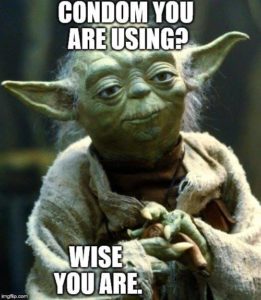
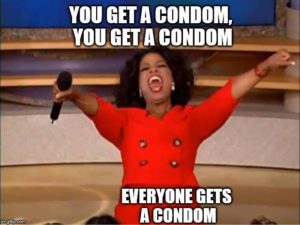
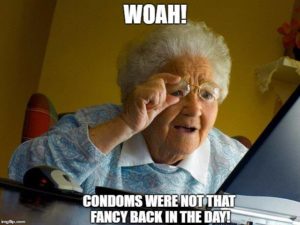
The contests, and other information shared on the Facebook page, provided accurate knowledge about sex and condom use in a fun and non-threatening manner. As the campaign evolved and garnered an increasing amount of interest, the staff of Blood Ties soon realized that the articles and other text-based messages that they were sharing weren’t proving too successful. Images, on the other hand, were quick to be liked and shared.
With this in mind, Blood Ties decided to refocus its campaign on image-based messaging, turning to the meme, and the likes of Yoda and Oprah, to help spread the world. While pre-formulated memes with sexual connotations abounded, those that included sex-positive and condom-friendly messages weren’t as easy to find. The two staff members in charge of the campaign proceeded to explore and learn how to use online meme generators in order to produce messages that concorded with the organization’s, and the CondomFairy’s message.
This will even help you to measure your success
In addition to generating interest and engagement, the contests also allowed Blood Ties to get an idea of the geographical diversity of their Facebook audience members, information that isn’t provided through Facebook metrics. In order to receive their prizes, contest participants had to share their mailing addresses, and Blood Ties was pleasantly surprised to note that more than half of the contest winners lived outside of Whitehorse, and very often, in Indigenous communities. Clearly, Facebook offered an interesting medium to reach a diversity of young people across the vast territory of the Yukon.
While the interest generated on Facebook started to wane towards the end of the three-month campaign, Blood Ties still posts occasional messages and receives feedback on the CondomFairy Facebook page. They are considering re-launching the campaign at a later date, which would allow them to assess whether a Facebook page can be successfully revived. In the meantime, the staff of Blood Ties continues to witness the ongoing repercussions of their campaign – young people often mention it in the workshop that Blood Ties offers, and they have even started referring to the prevention and outreach staff members as CondomFairies.
It’s important to normalize condom use in a positive and humorous way because that’s what young people respond to. We want to make these conversations less awkward.Sarah Cloutier, Health Education Coordinator
INTERESTING FACTS:
- Through Facebook metrics, Blood Ties was able to ascertain that 80% of those who engaged with the campaign identified as female. Moving forward, they hope to develop a strategy that will allow them to reach a larger proportion of male-identifying individuals.
- The person who won the contest suggesting new condom flavours proposed orange creamsicle, cheese cake, ice tea, black berry and mango-flavoured condoms.
- Around 85% of users viewed the Facebook page on a mobile device.
- Blood Ties gave out 32 prizes during the campaign (these were mailed out or winners picked them up at the office).
- The average number of people reached by posts on the Facebook page was 758. For posts that were boosted (paid for), the average was 1345, and for posts that were not boosted, the average was 170.
